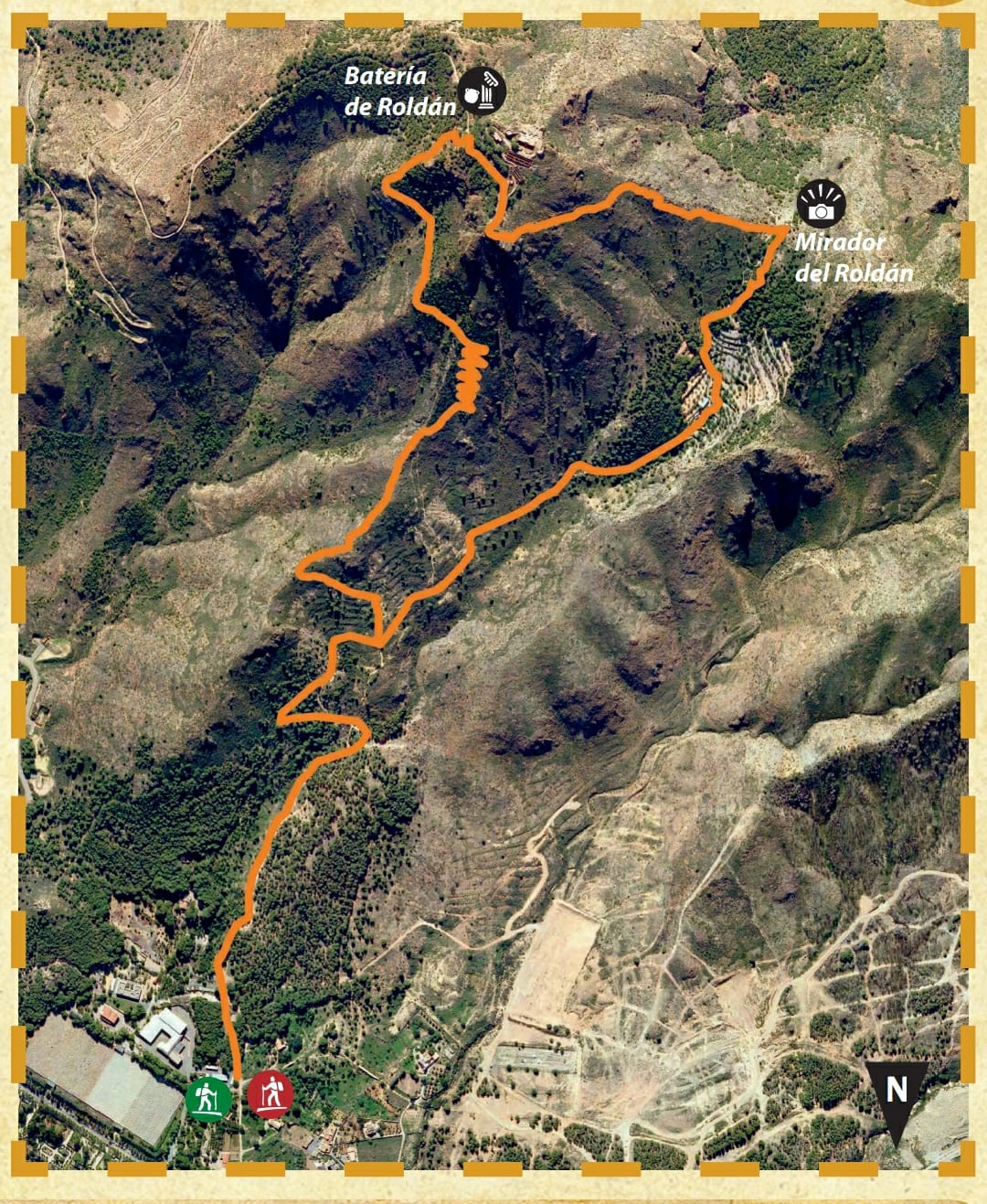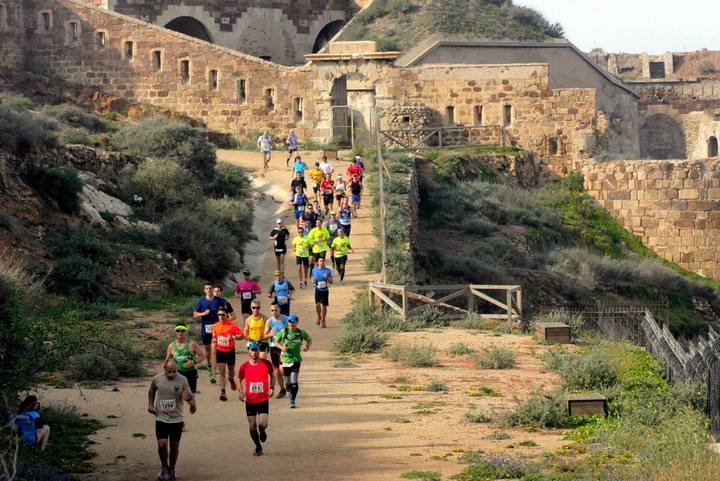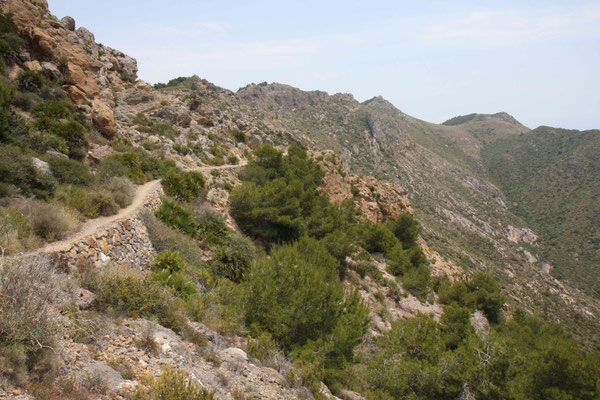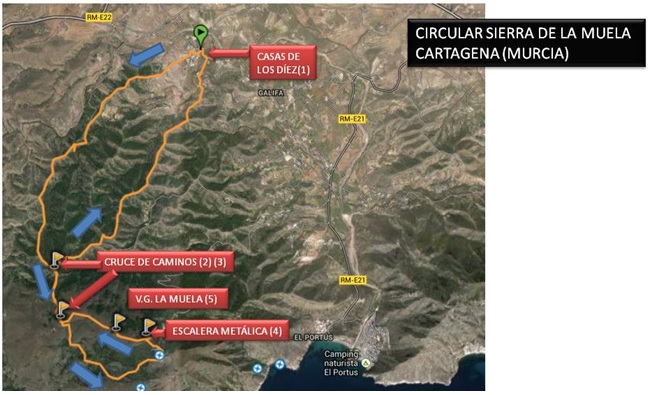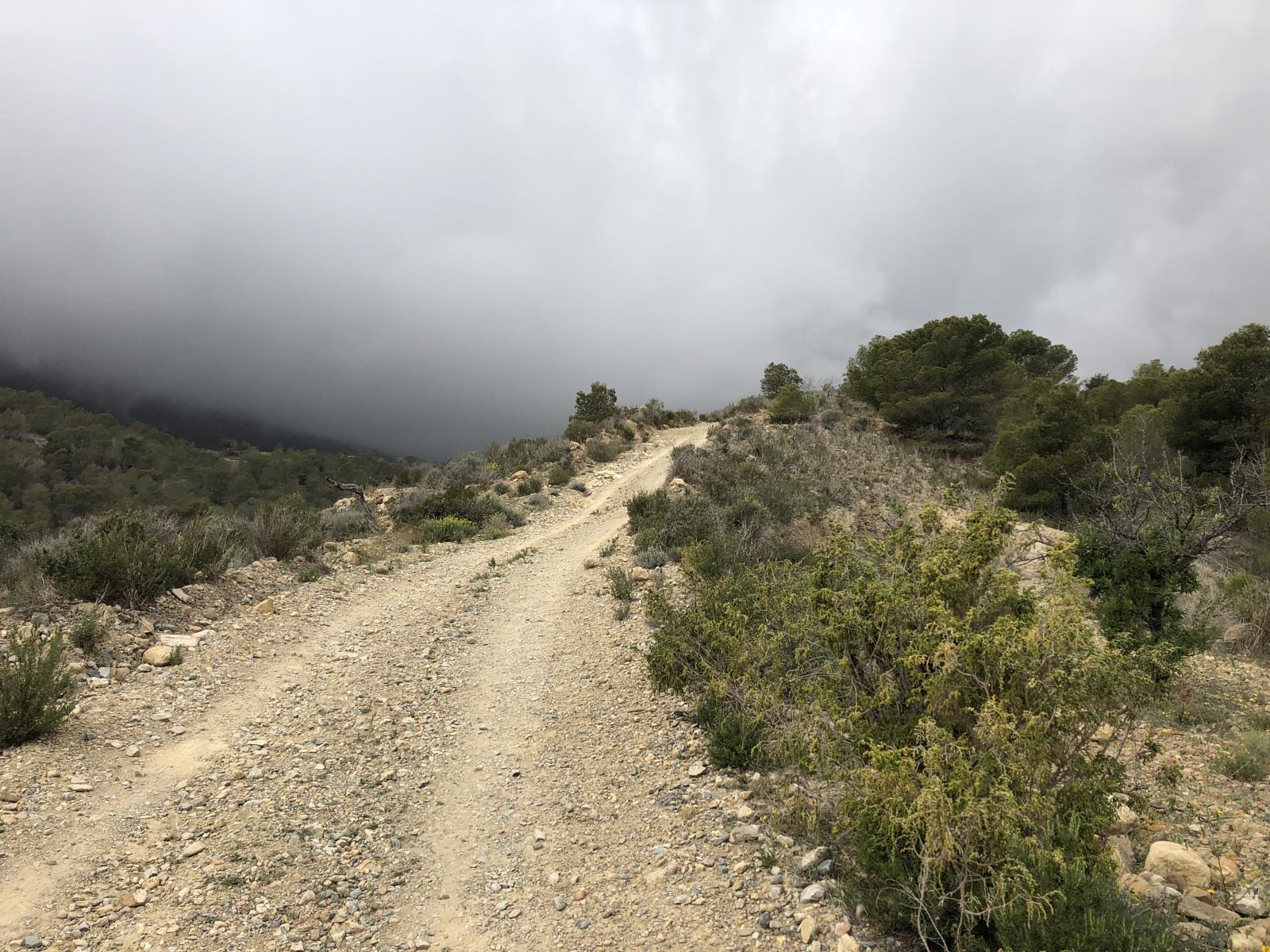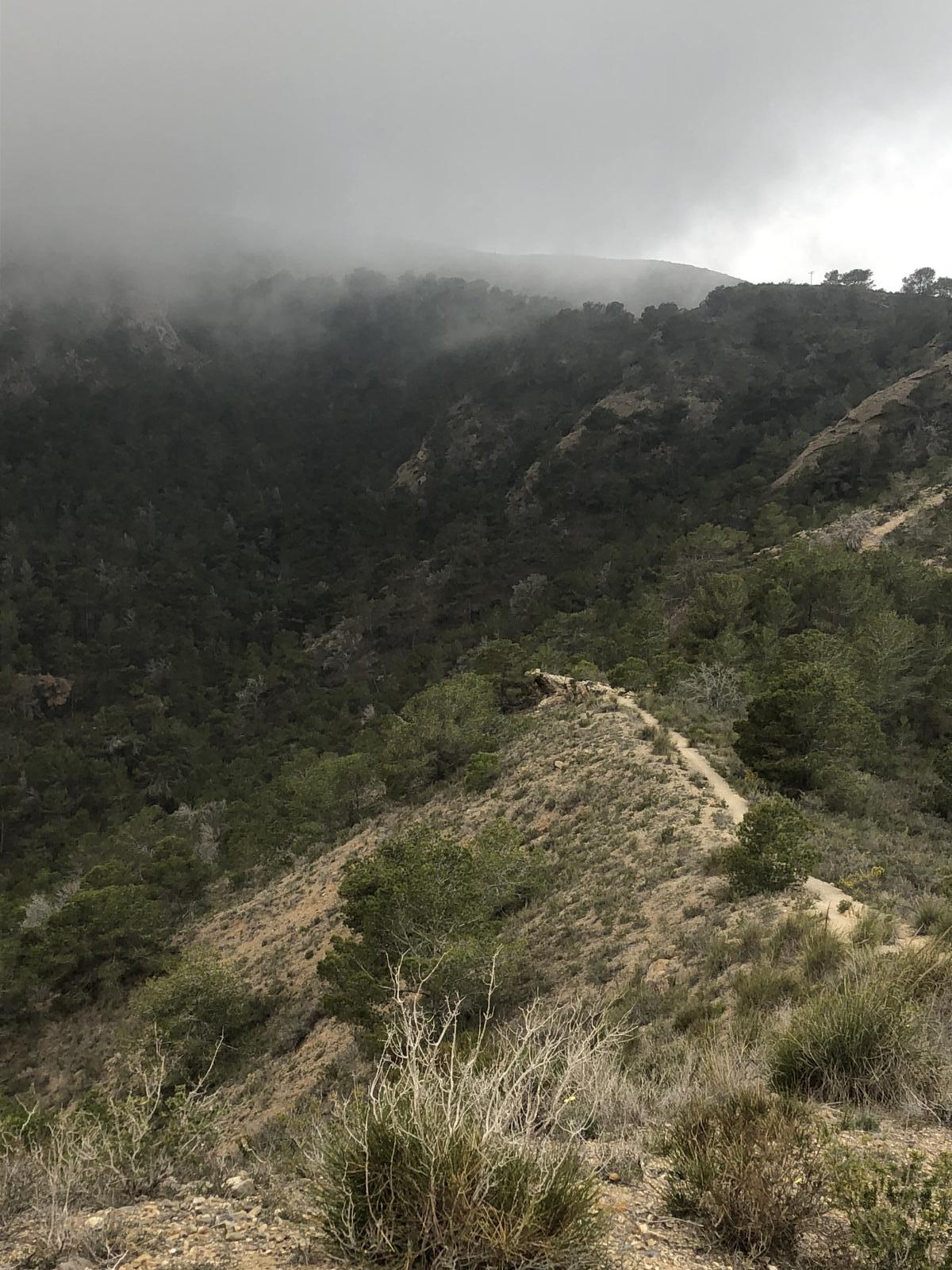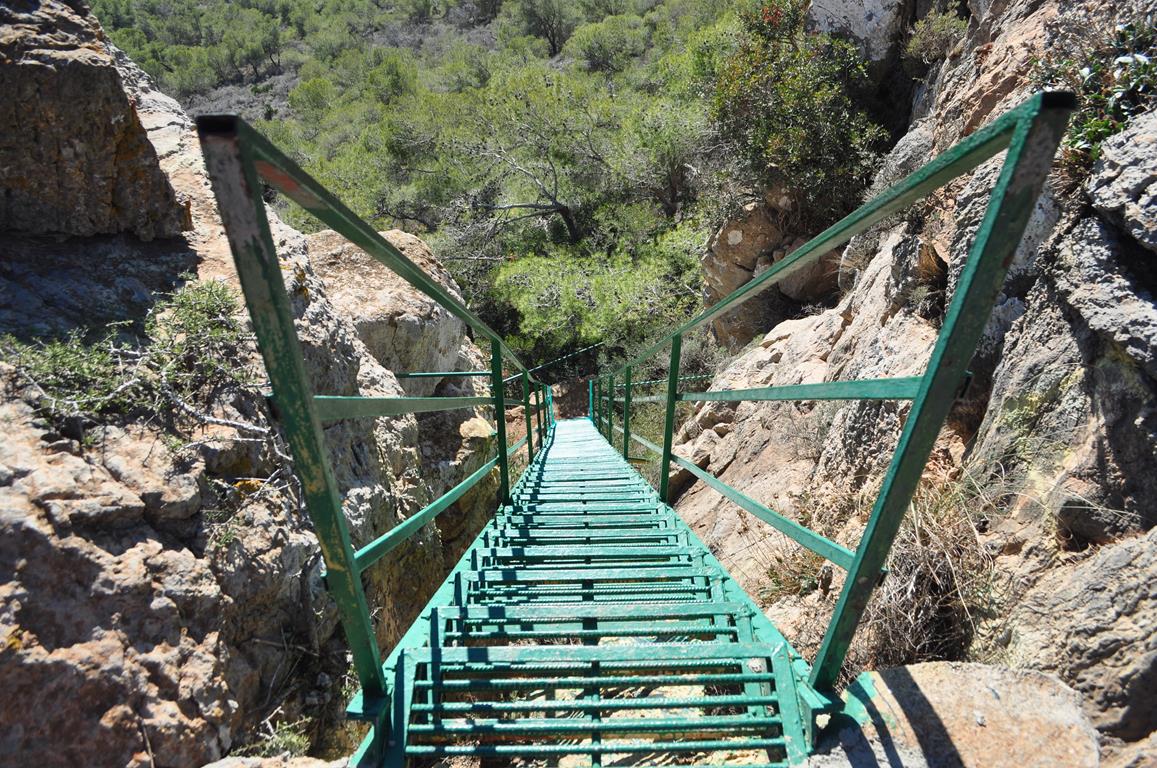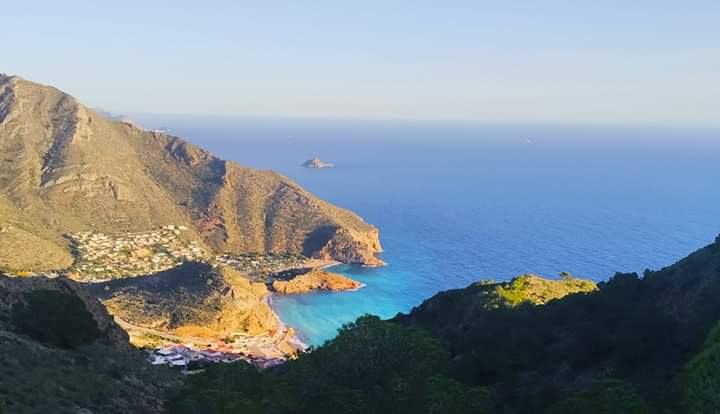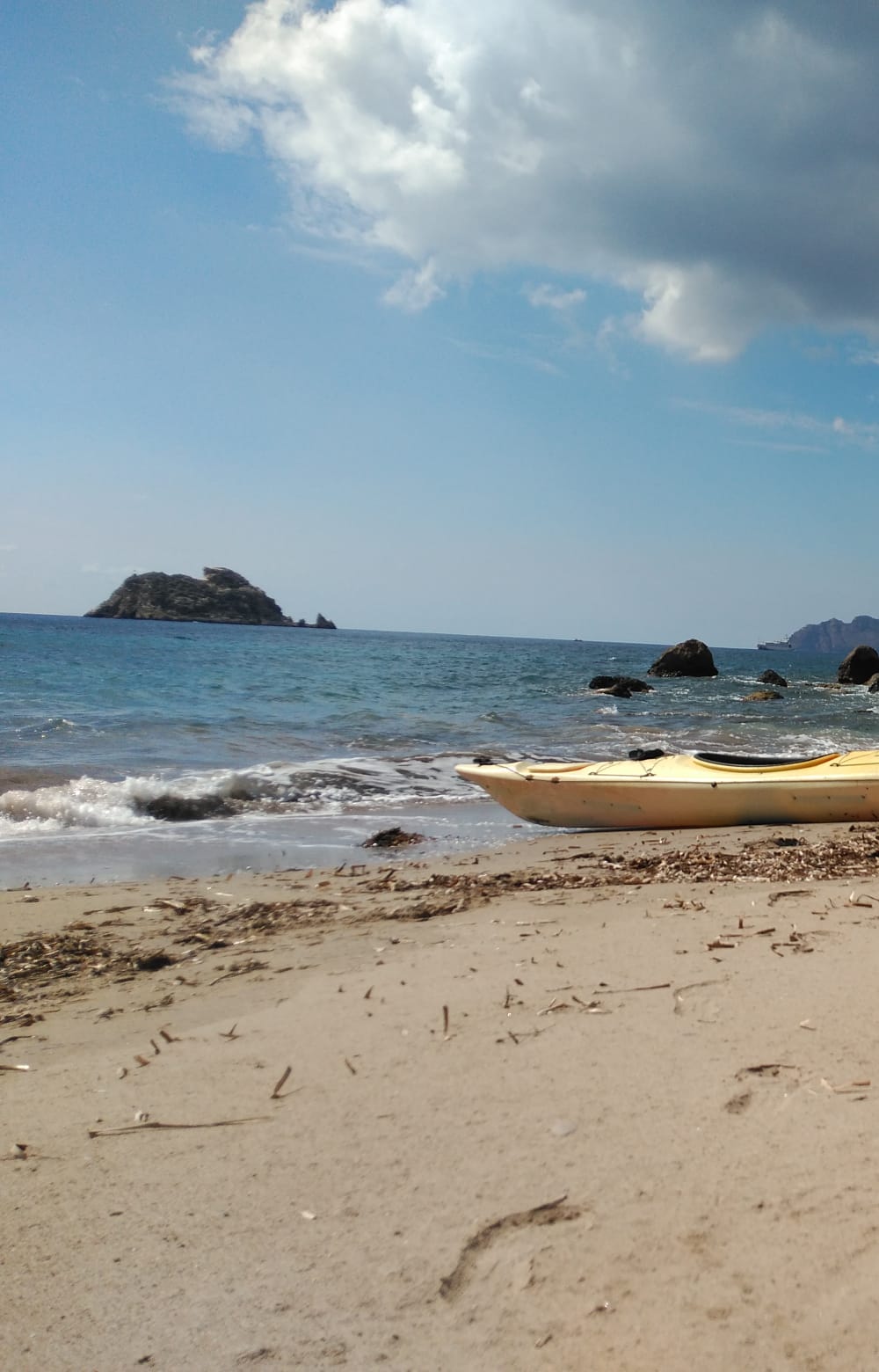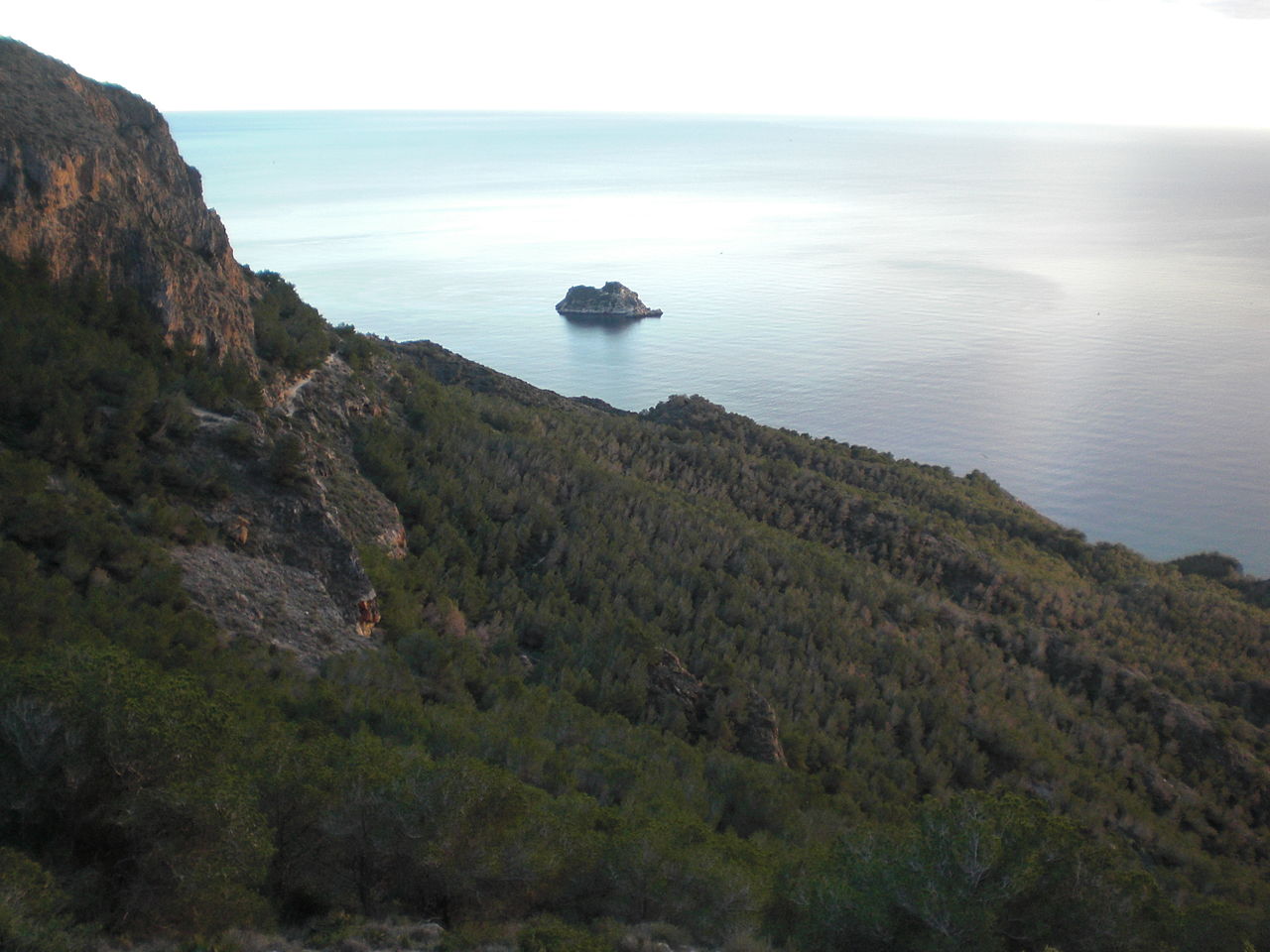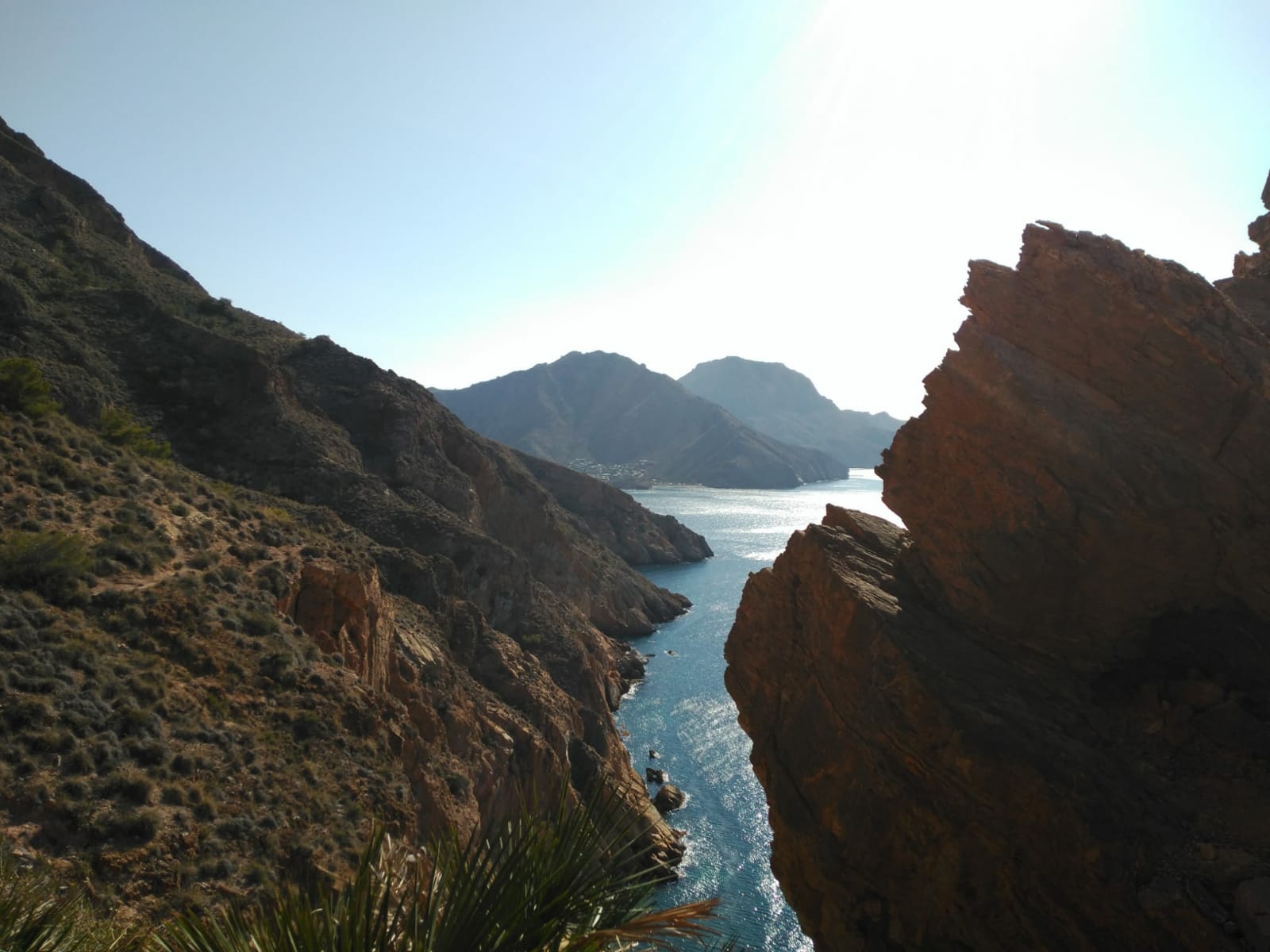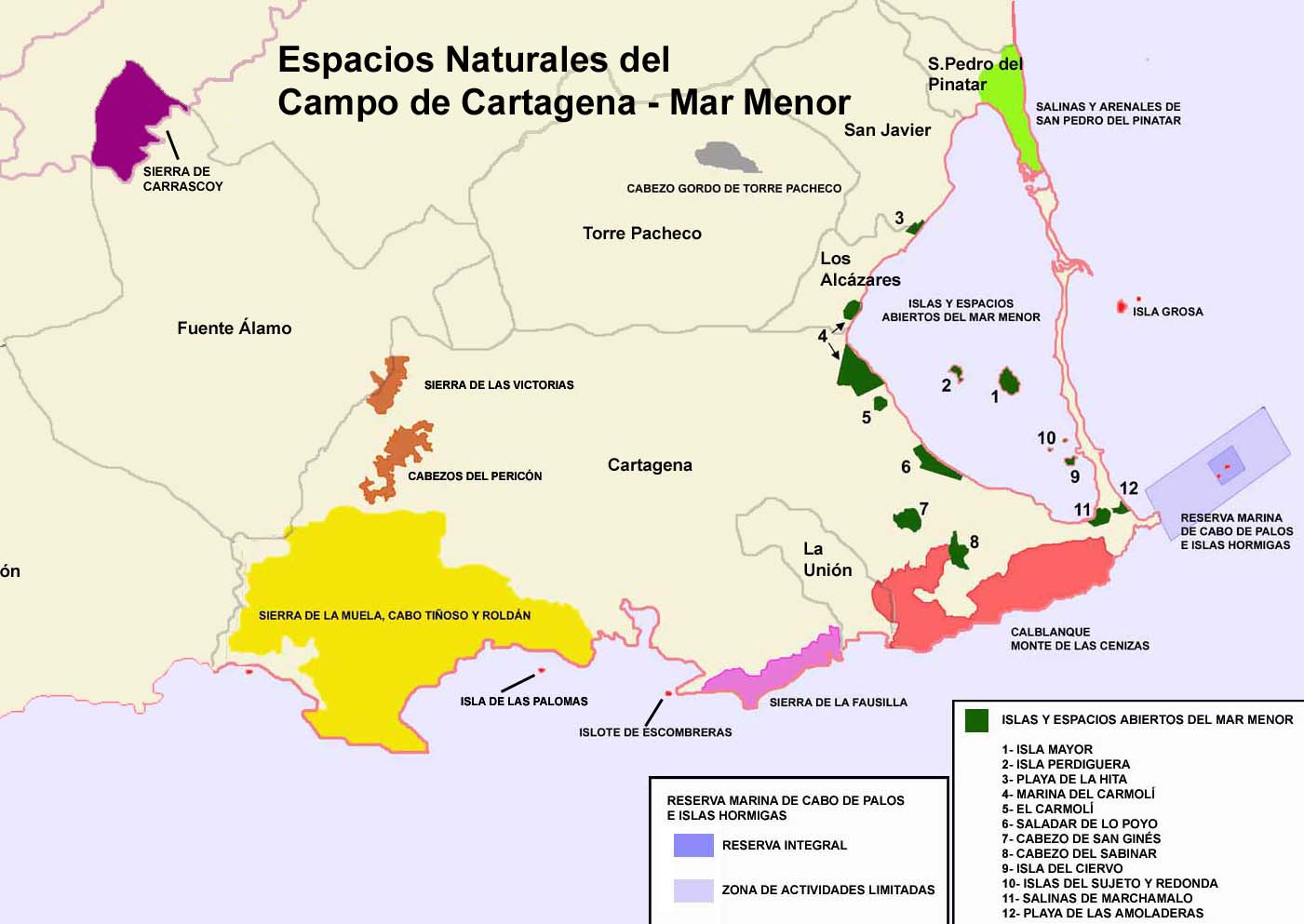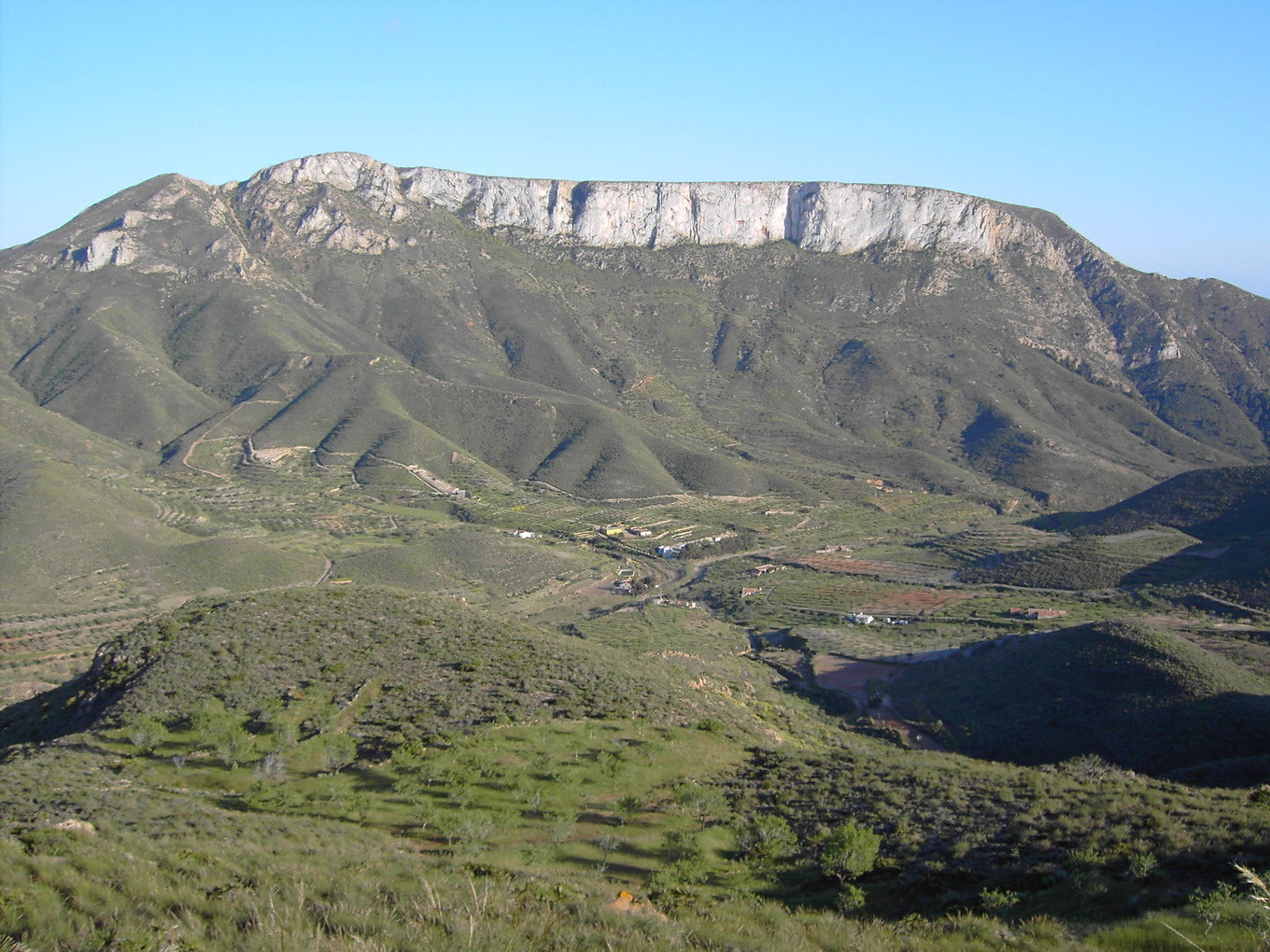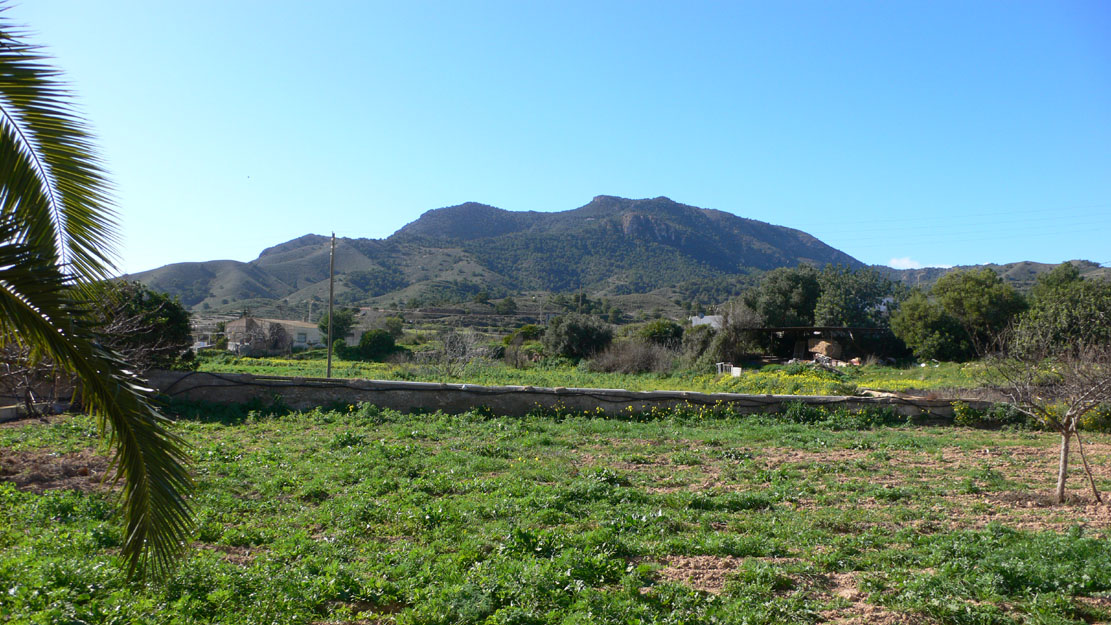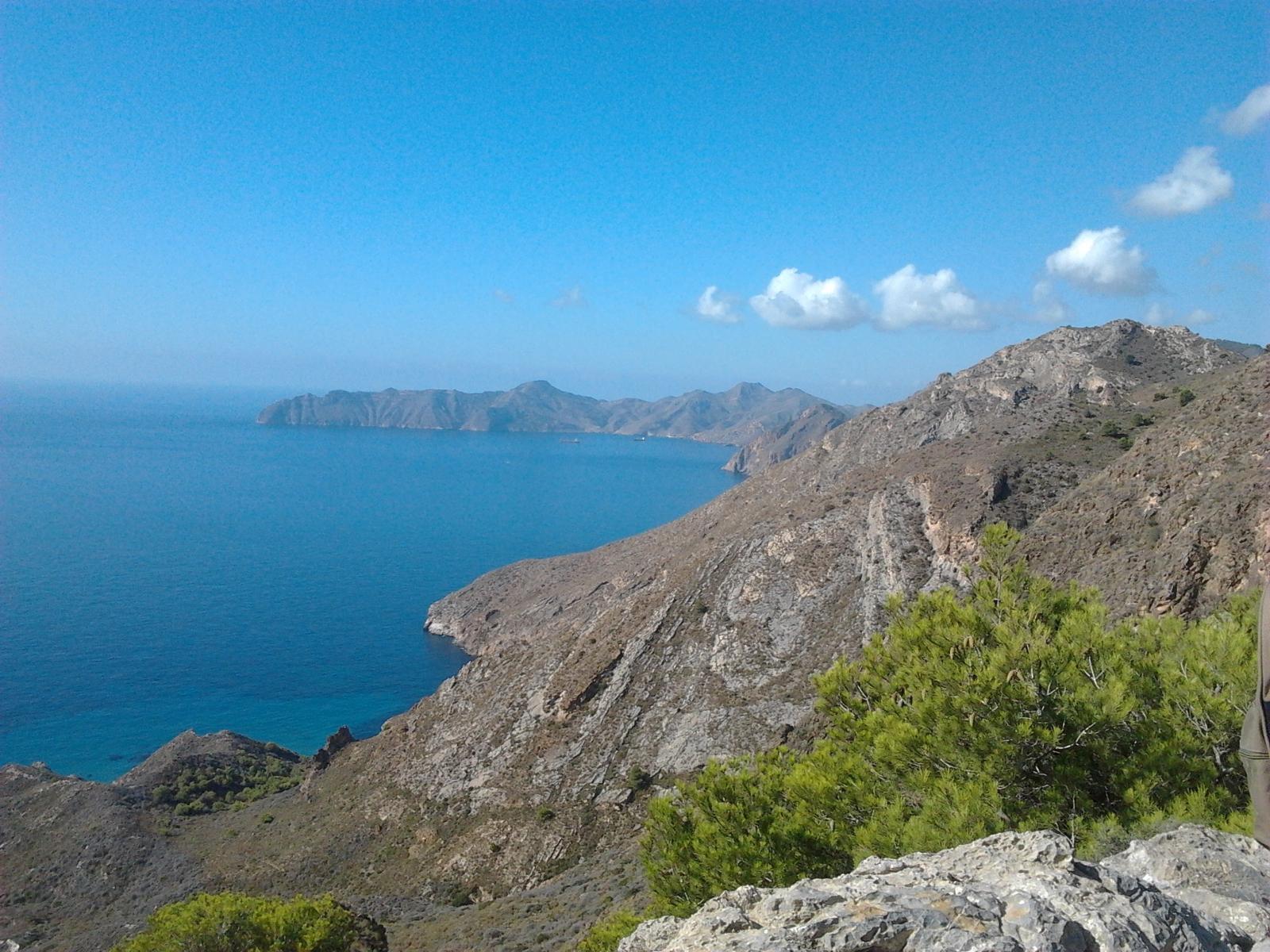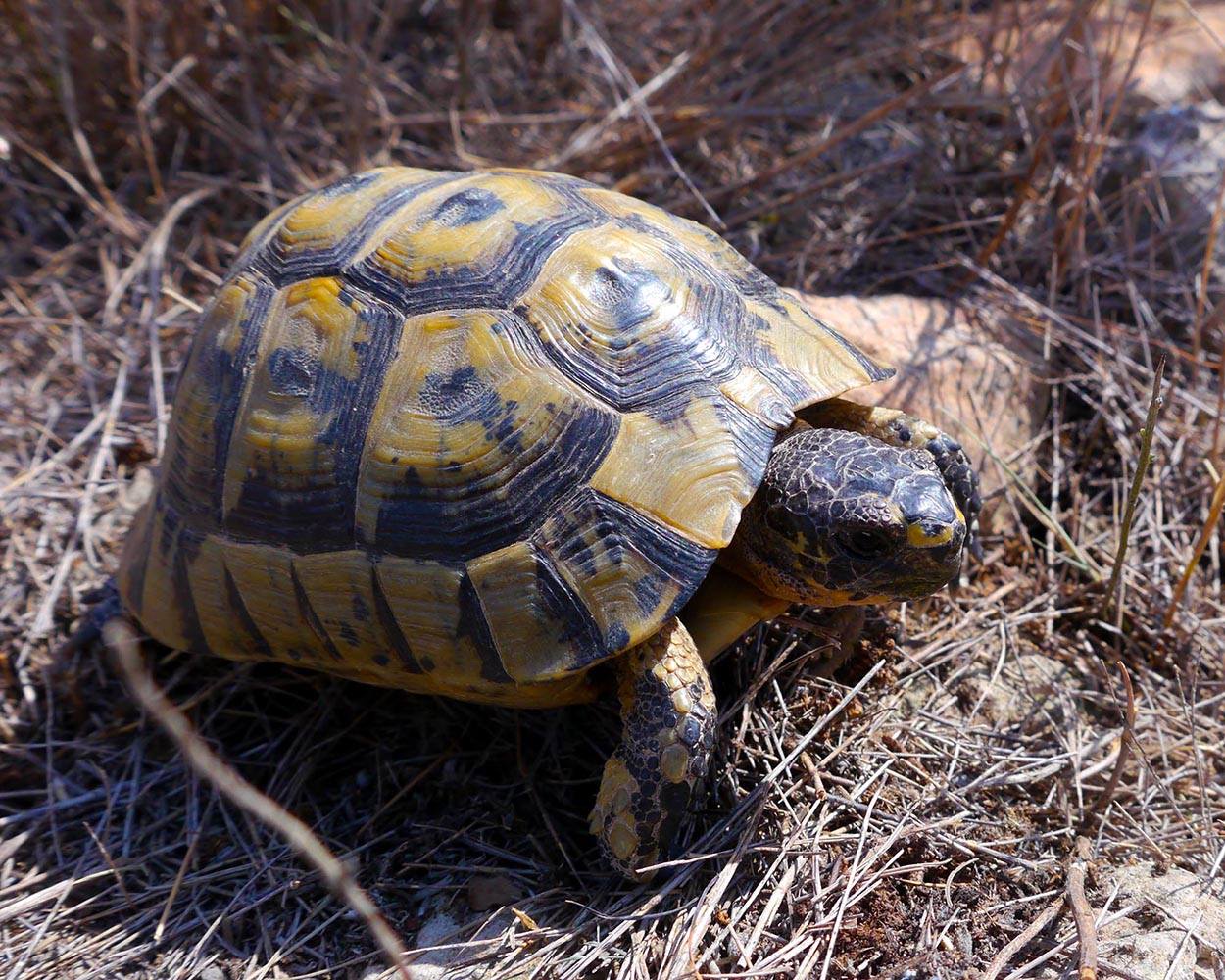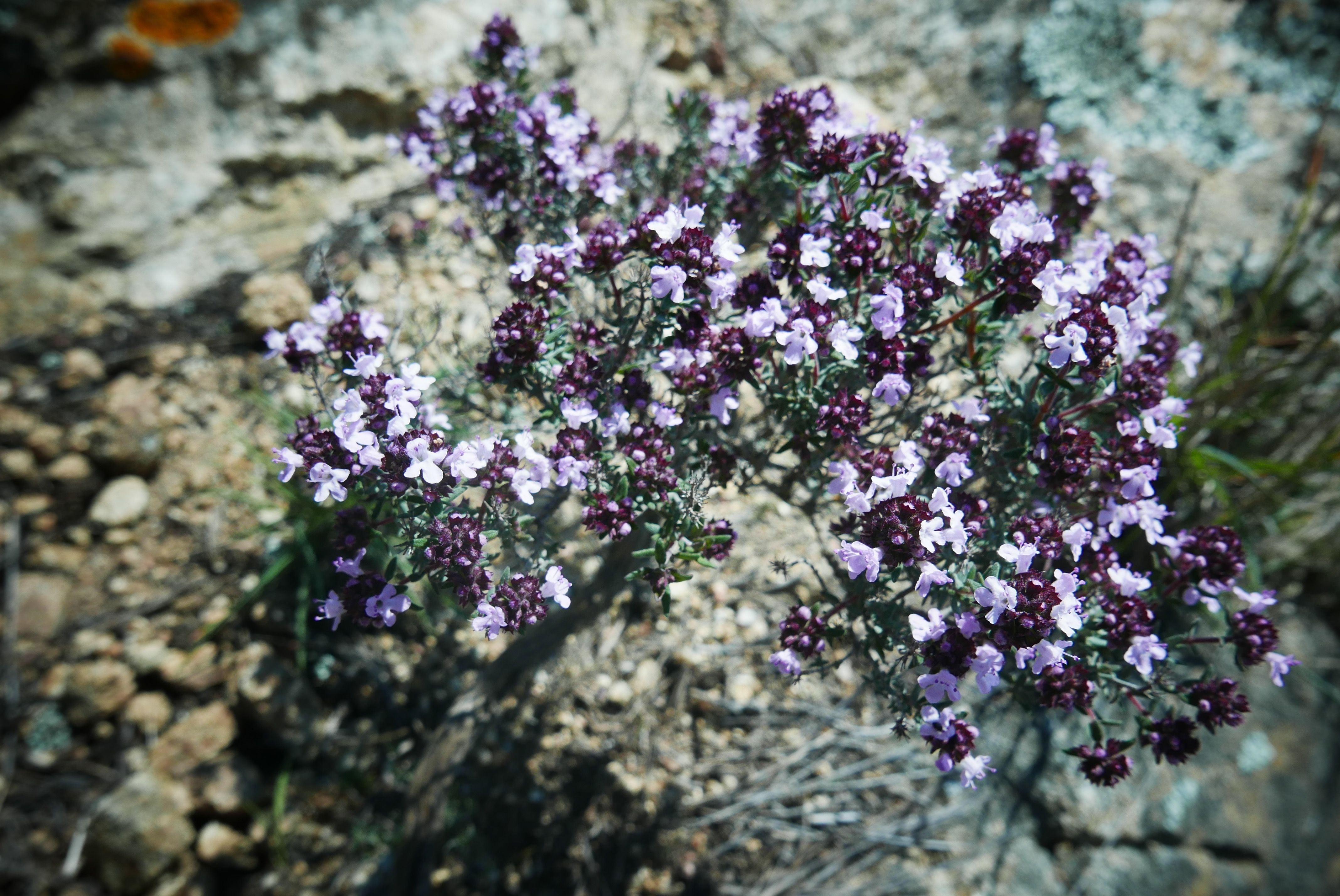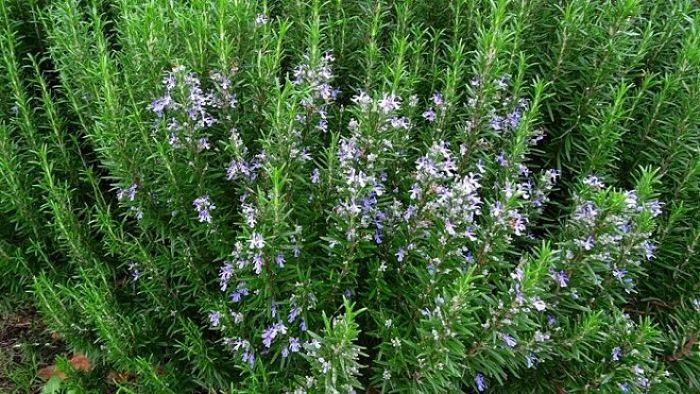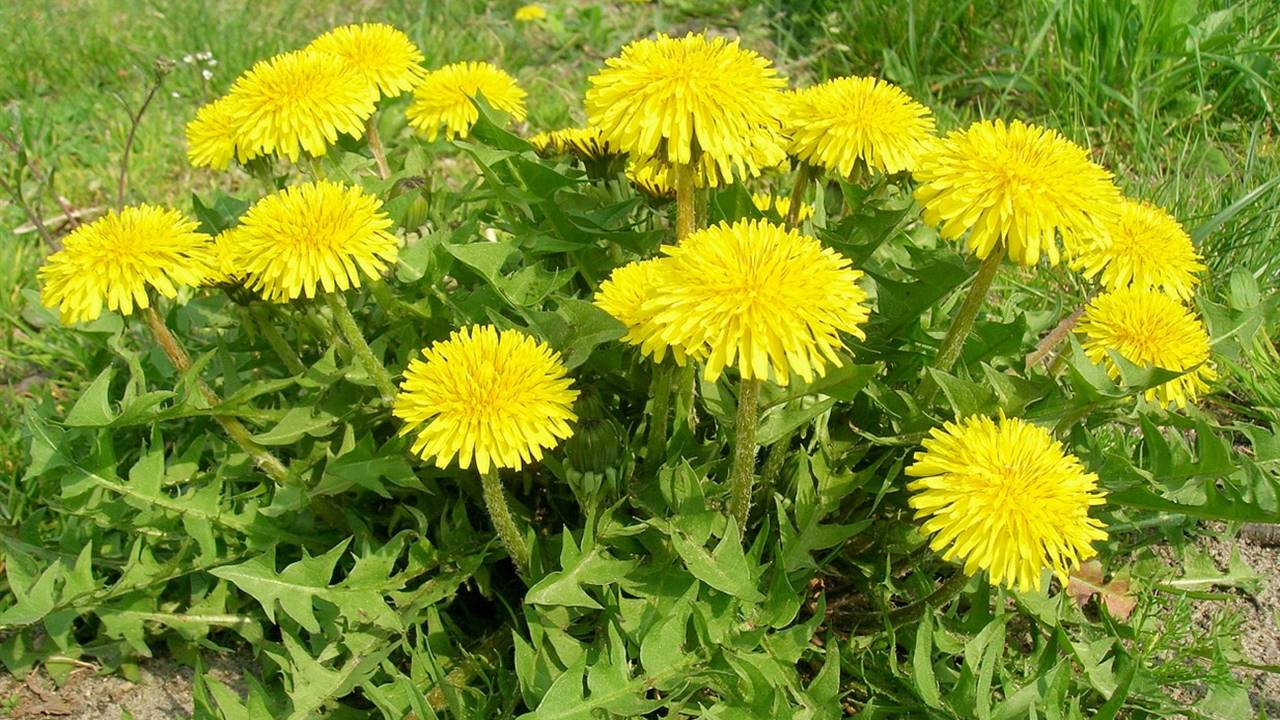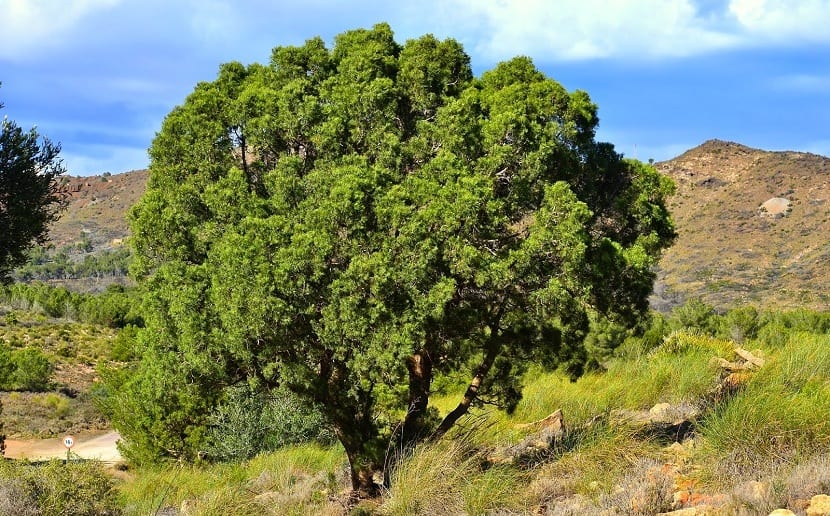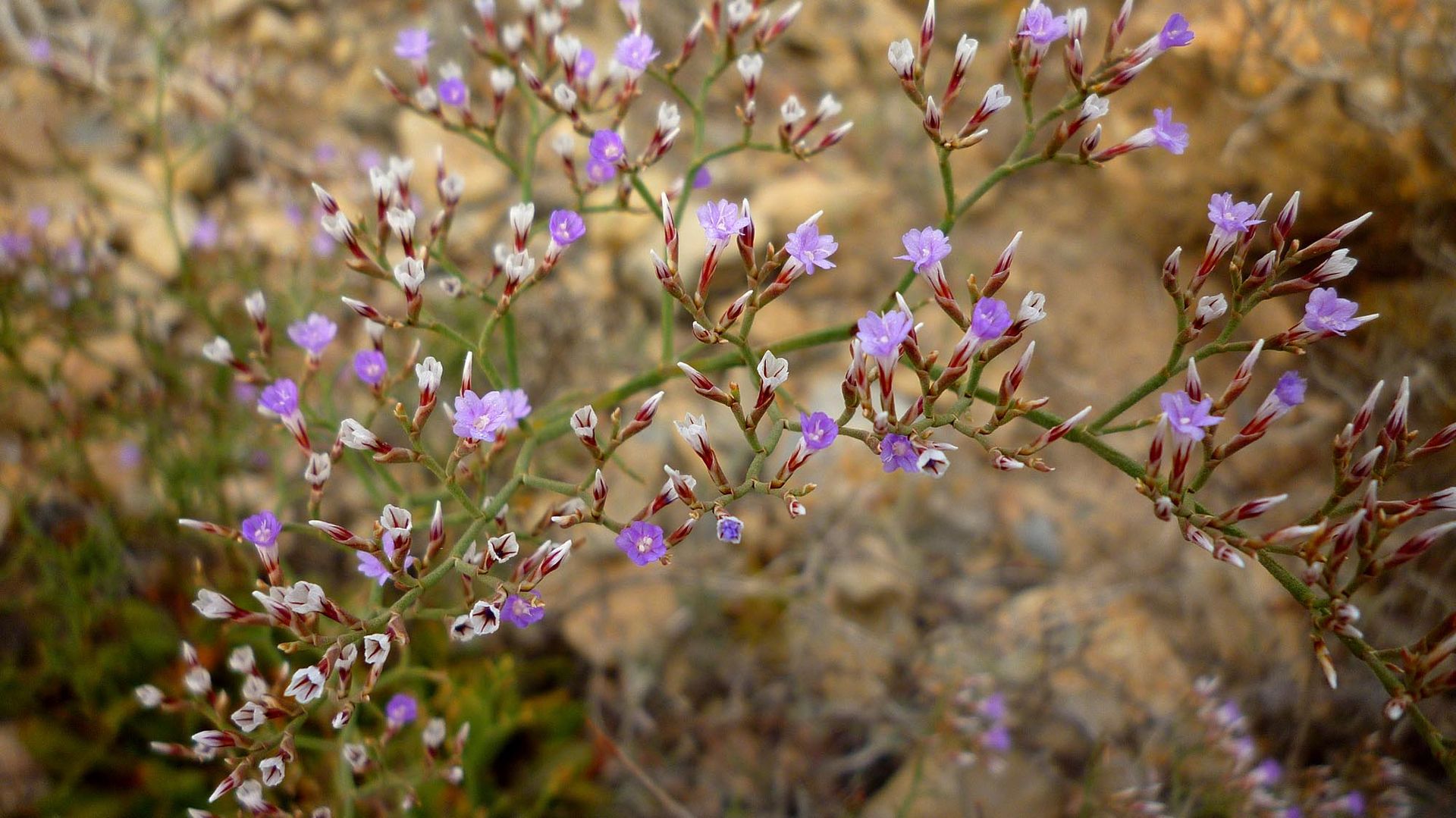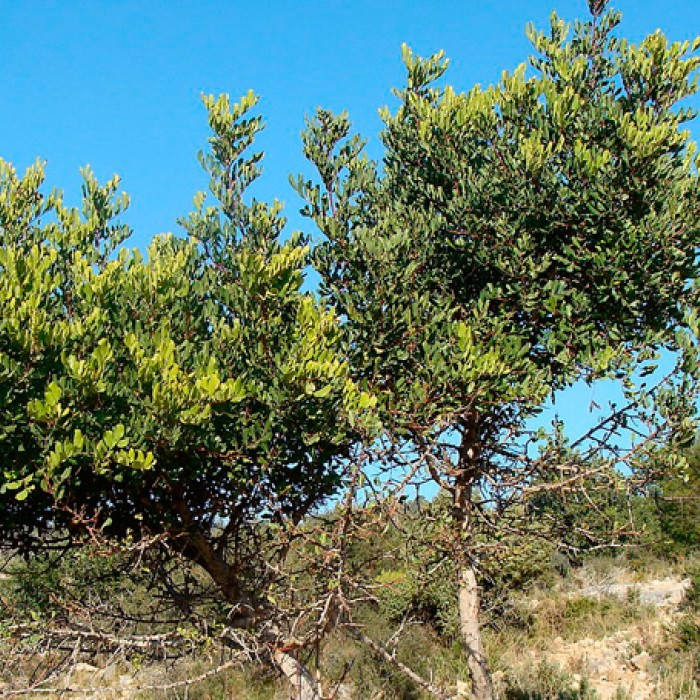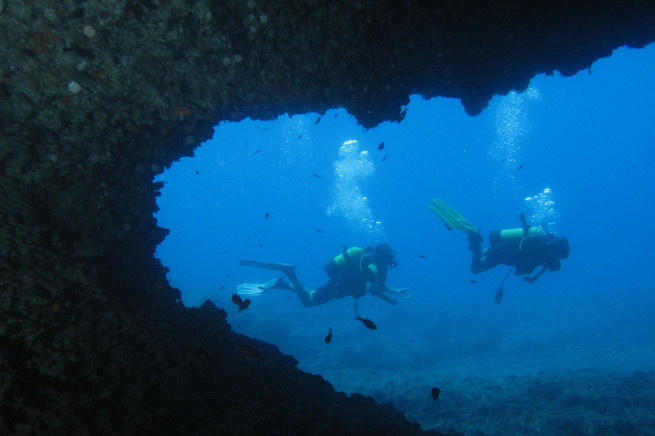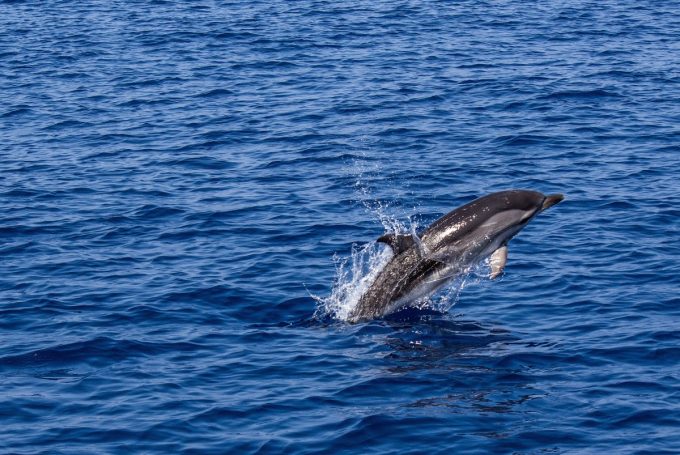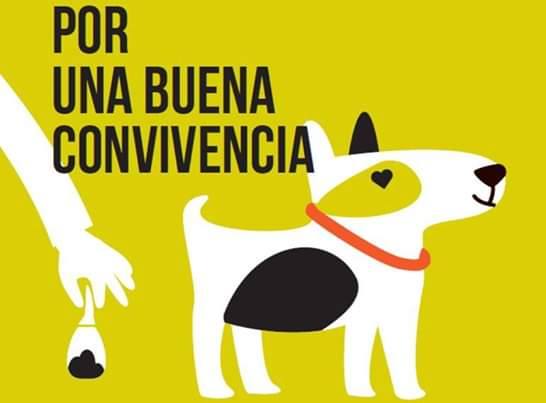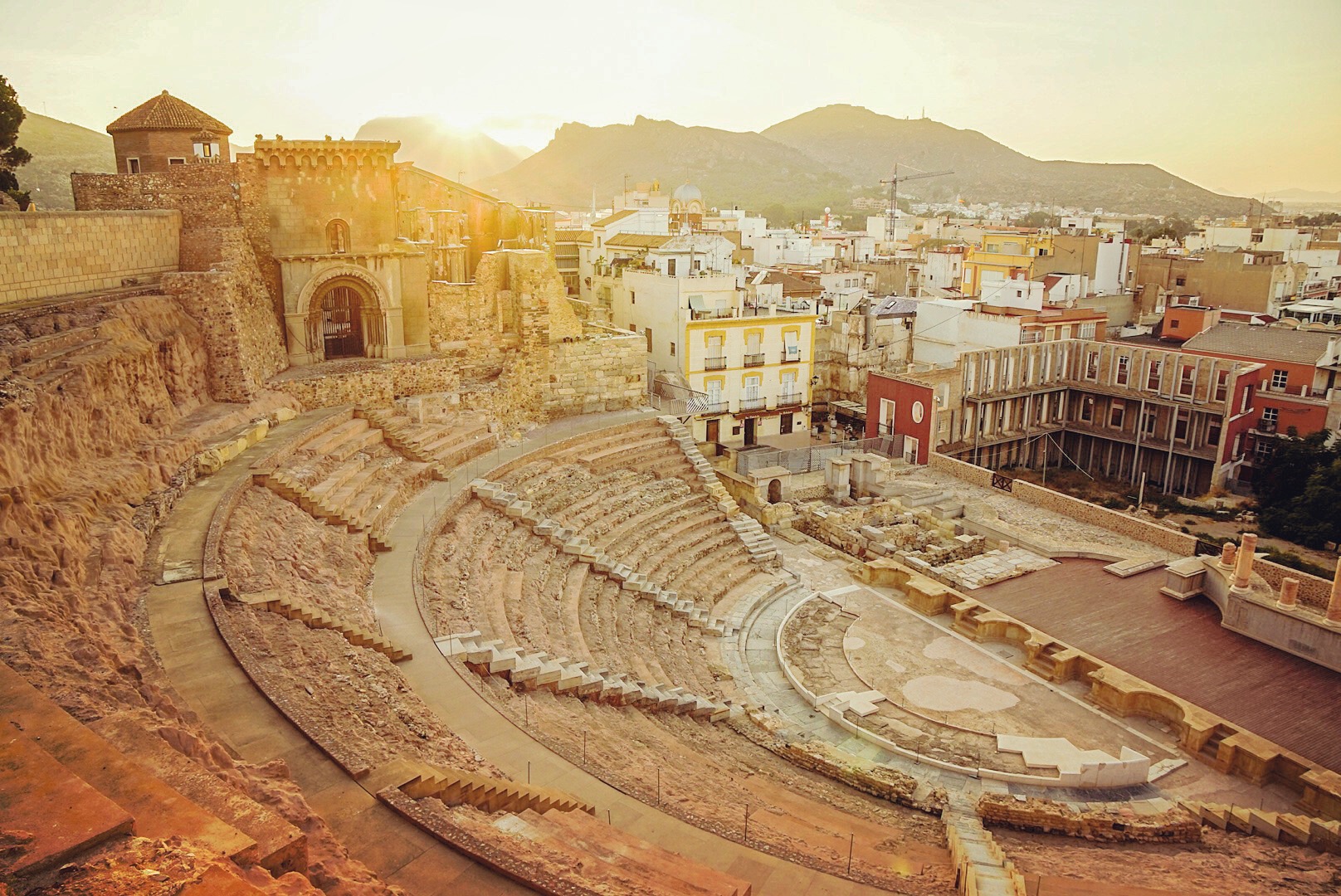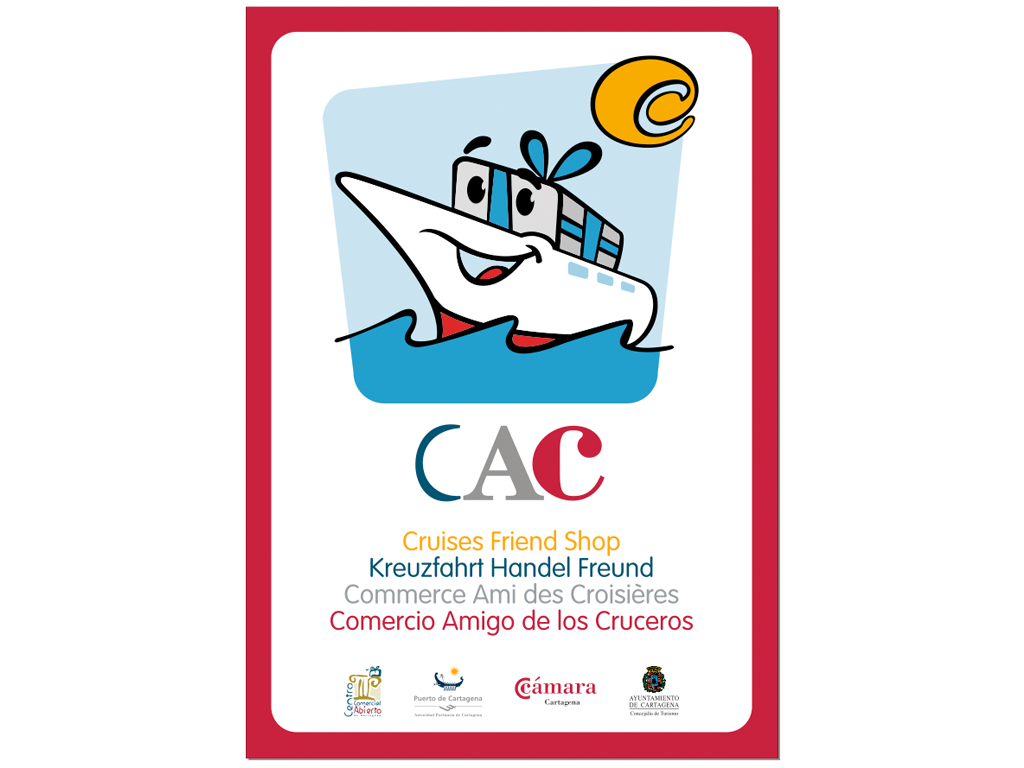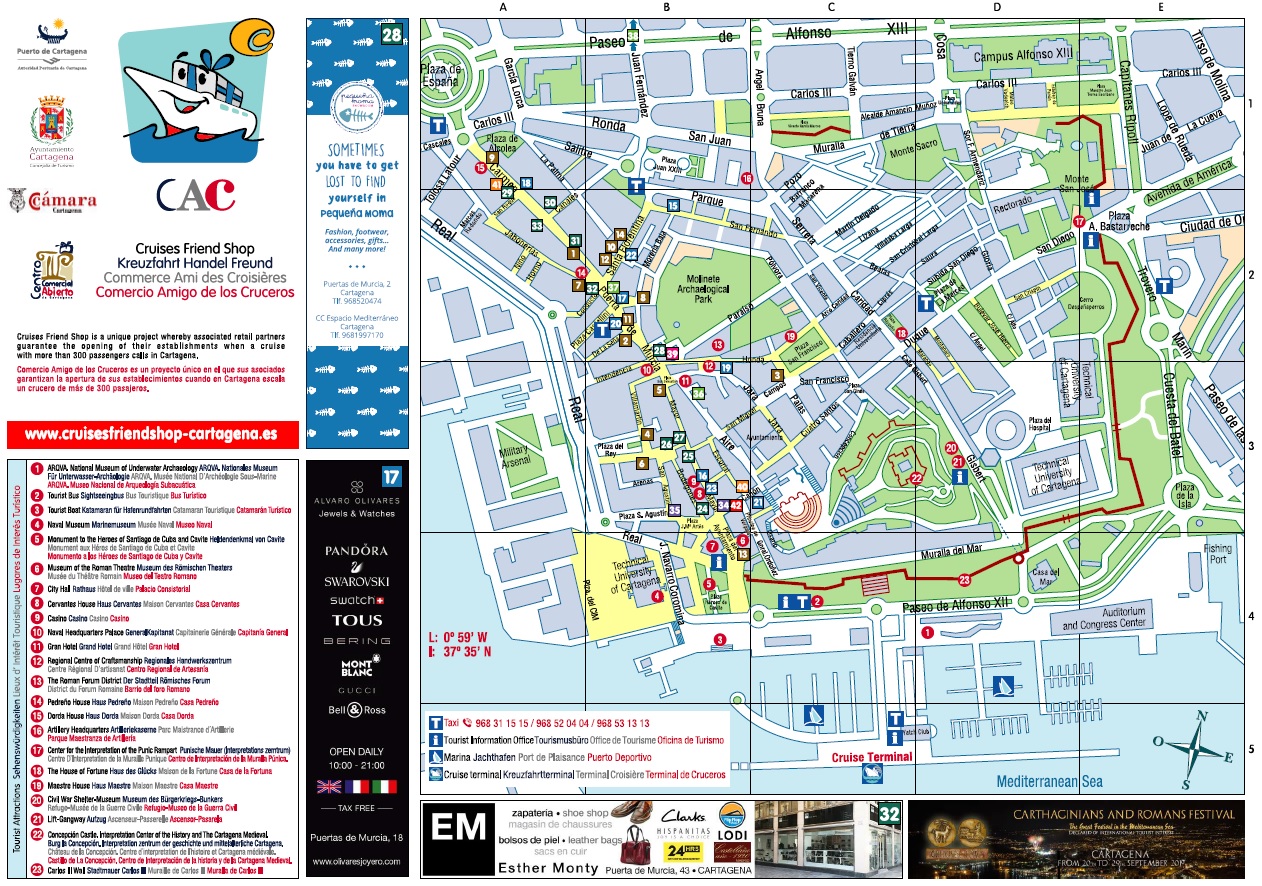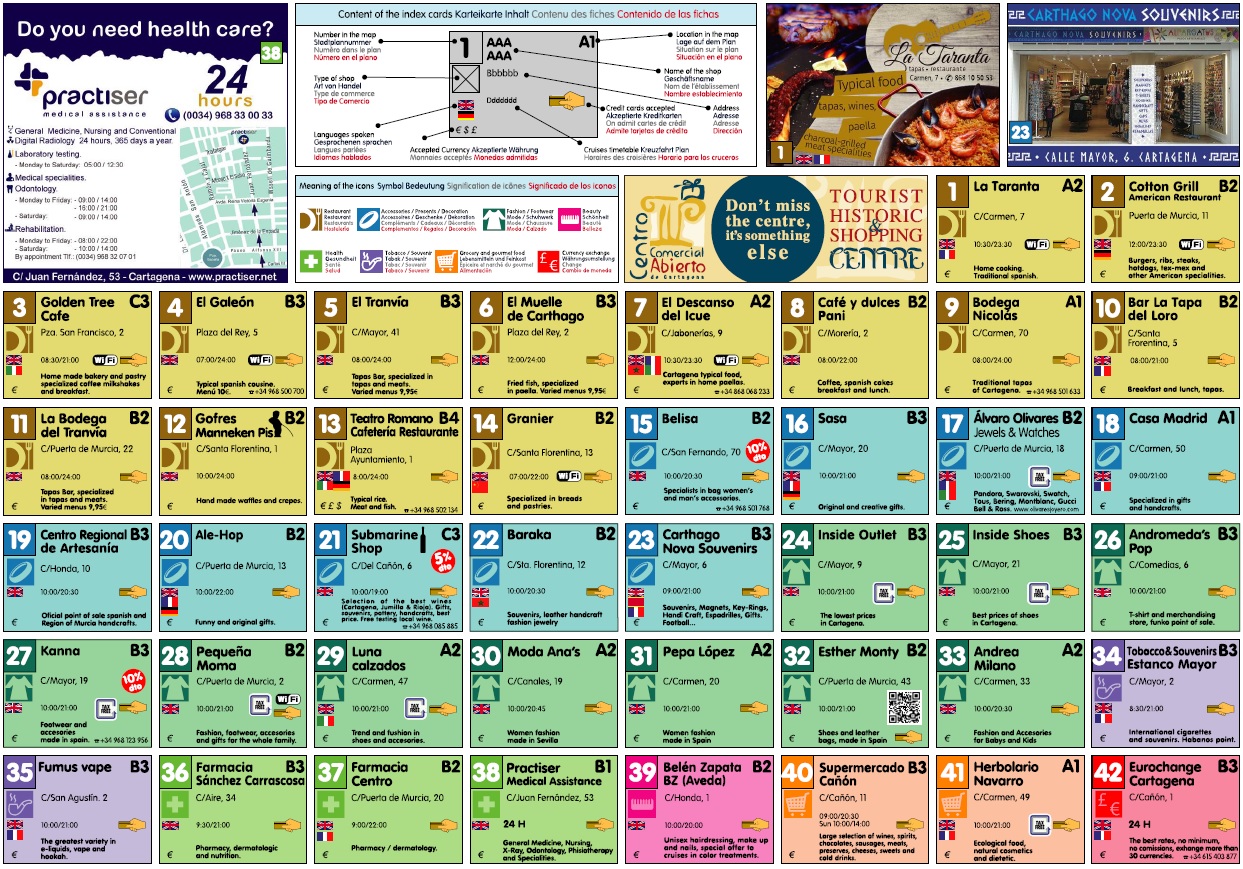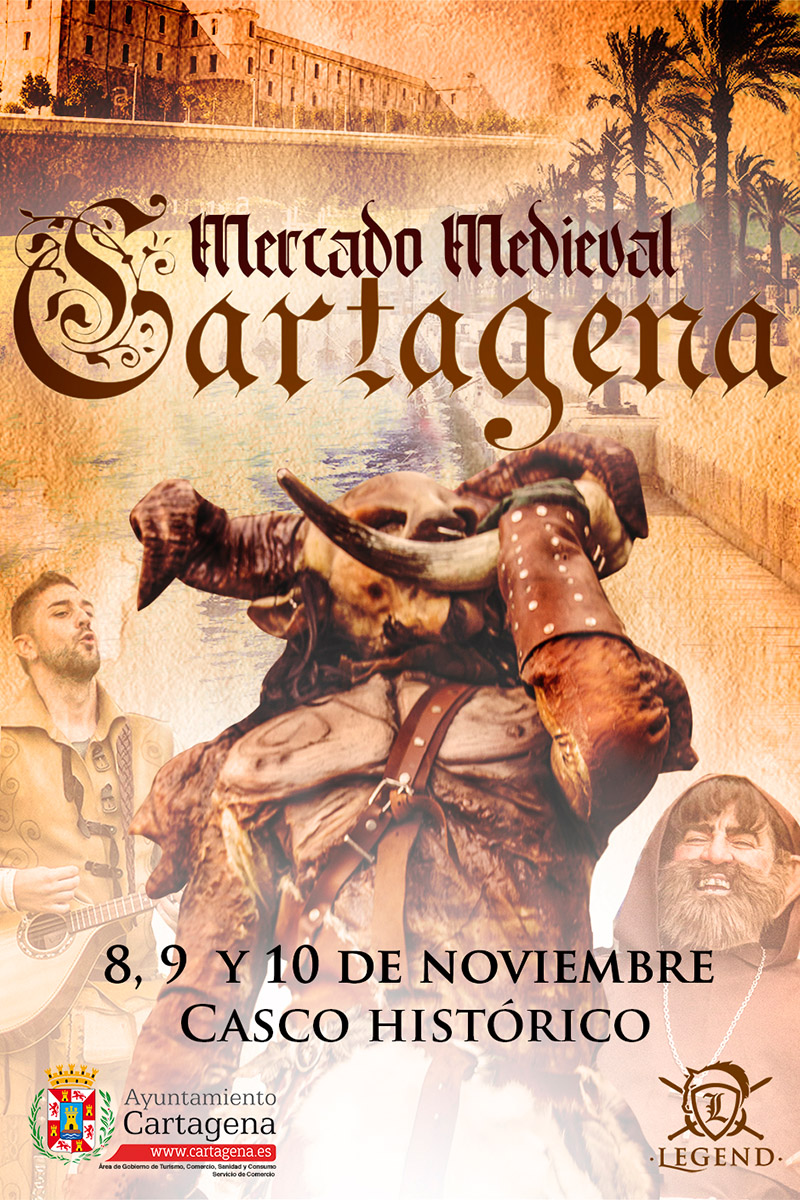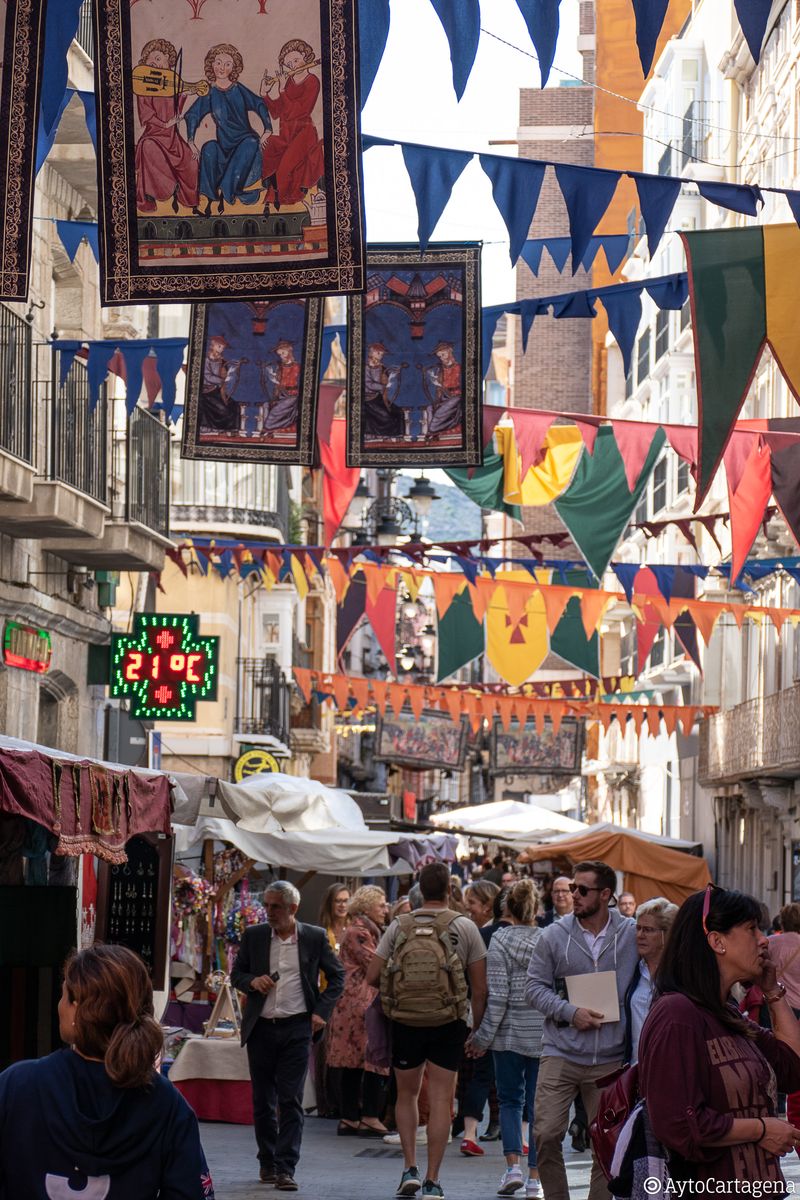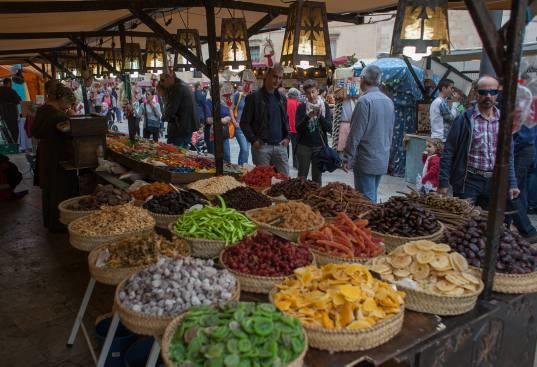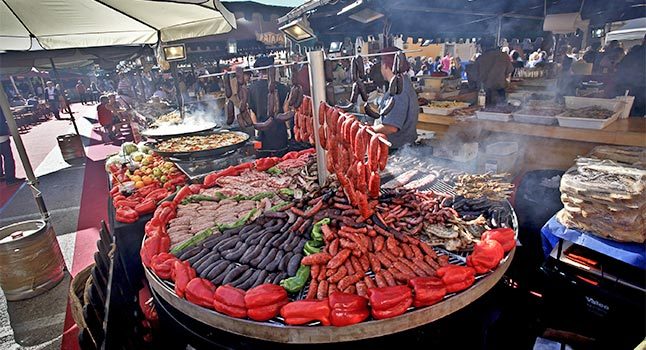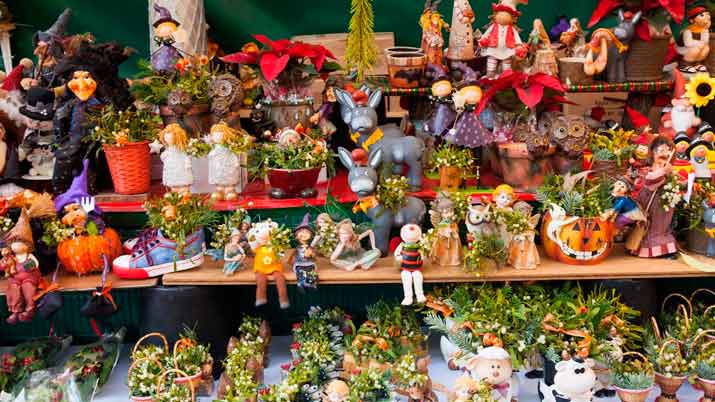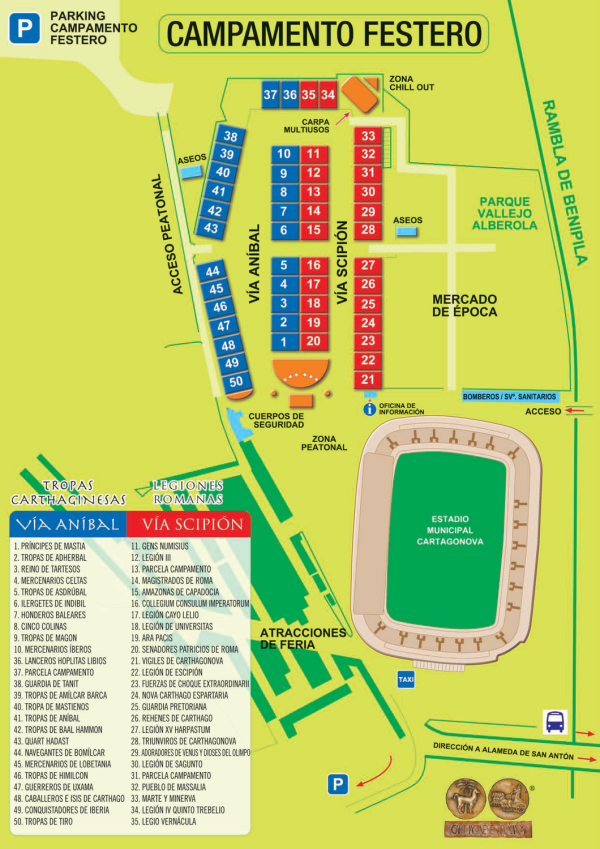En este segundo capítulo dedicado a nuestro entorno más cercano os proponemos una serie de rutas para los amantes de la montaña y del mar, una manera muy sana para salir de la rutina volviendo a los orígenes del ser humano, disfrutando de la naturaleza con todo lo que nos ofrece, siendo conscientes de la necesidad de una óptima adaptación al medio.
Os proponemos una visita al monte Roldán, una ruta a la Sierra de la Muela e intensificar así la sensación de monte y un atractivo paseo en piragua por nuestros alrededores visitando La Cueva del Gigante, playa Fatares y la Isla de las Palomas.
SENDERO MONTE ROLDÁN
La subida al Monte Roldán, en el Espacio Natural de la Sierra de La Muela, Cabo Tiñoso y Roldán, nos ofrece, a 490 metros sobre el nivel del mar, impresionantes vistas del litoral cartagenero. Durante el recorrido se puede disfrutar de un entorno natural de alto valor ecológico y visitar en su cumbre la batería de Roldán, declarada Bien de Interés Cultural.
- Tipo: Circular
- Distancia: 5,7 km
- Tiempo estimado: 2 h y 30 min.
- Dificultad: Media
- Desnivel: 450 m
- Inicio y final: aparcamiento junto a la instalación de los canales del Taibilla.
Para saber un poco más…
«Cuando el Roldán tiene montera llueve en Cartagena quiera Dios o no quiera» (Dicho popular )
El Monte Roldán, por su cercanía a la ciudad de Cartagena y su atractivo paisaje, es muy frecuentado para la práctica de senderismo, ciclismo, carreras por montaña y todo tipo de actividades recreativas. Asimismo, es el escenario de importantes eventos deportivos como la carrera “Ruta de las Fortalezas”.
Este intenso uso del espacio provoca impacto en el medio como son:
- Erosión del terreno.
- Pérdida de vegetación por la proliferación de atajos.
- Abandono de basura.
- Molestias a la fauna.
Para seguir disfrutando de los privilegios que nos ofrece el Monte Roldán, es imprescindible seguir una serie de recomendaciones y buenas prácticas que contribuirán a la conservación de los valores naturales que alberga.
¡ TE LAS MOSTRAMOS !
Manual de buenas prácticas
- Al realizar un sendero no te debes salir del mismo, ni tomar atajos. Así respetas a las plantas y animales que viven en las inmediaciones de tu paseo, y evitas la erosión del suelo.
- Si eres ciclista, por tu seguridad y la de los demás, respeta la velocidad de 20 km/h y frena tu marcha cuando te cruces con otros usuarios, así como en curvas o puntos con poca visibilidad.
- La organización de actividades deportivas en el Espacio Natural requiere la solicitud de autorización previa a la consejería de medio ambiente.
- Los animales domésticos pueden asustar y molestar a los animales silvestres o a otros visitantes. Mantenlos atados.
- Llévate los restos orgánicos y la basura, este Monte no los necesita.
- Con una foto puedes llevarte a casa toda la naturaleza, sin necesidad de dañar la flora, fauna y geología del lugar.
RUTA SIERRA DE LA MUELA
Toca volver a la montaña, toca endurecer el desnivel y recorrido para recuperar las sensaciones que los montes, sus senderos y sus vistas otorgan.
Bonita subida a un monte emblemático de la zona. Las vistas son espectaculares.
 La ascensión no tiene dificultad técnica alguna, hay una escalera metálica que nosotros usamos en bajada, impresiona un poco pero es sencillo.
La ascensión no tiene dificultad técnica alguna, hay una escalera metálica que nosotros usamos en bajada, impresiona un poco pero es sencillo.
- Nombre de la ruta : Circular Sierra de la Muela, Cartagena.
- Plano de ruta y datos :
- Distancia: 10, 8 km.
- Ruta circular: Sí.
- Cotas. Mínima 169 m. Máxima 599 m.
- Tiempo empleado: 2 h. 40′.
3. Perfil :
4. Descripción de la ruta :
Desde Cartagena, salimos dirección “Canteras” por la RM-E22. Al salir de canteras, nos encontramos con un desvío que nos llevará hasta la playa de El Portús y Galifa. Seguimos en dirección Galifa hasta llegar a Los Díez.
Desde Casas de Los Diez, solo hay que seguir la primera cuesta que vemos, junto a la denominada “Casa de la Pradera”, la cual nos llevará por una pista primero y un estrecho sendero después, hacia las inmediaciones de la cima. El camino es un poco rompe-piernas dado que va siguiendo la cresta de las lomas, con lo que subimos y bajamos constantemente.
En la ruta están marcados dos cruces de caminos, entre los cuales el trayecto es de ida y vuelta. El primer cruce nos servirá para variar el camino de vuelta al punto de inicio y el segundo nos marcará el sentido circular a la cima de la sierra. Entre los kilómetros 4 y 5 tenemos la sensación de que bajamos más de lo debido pero desde el kilómetro 5, la subida se vuelve más exigente, como debe ser si queremos llegar a lo más alto.
En el kilómetro 6 nos encontramos una grata sorpresa: una escalera metálica para subir a la cresta.
Las vistas al Mediterráneo, desde el vértice, son sencillamente espectaculares; en esta foto nuestro camping y la isla de las Palomas al fondo.
El imponente monte Roldan y demás alturas de Cartagena son visibles desde la Muela. El Vértice Geodésico se encuentra junto a unas antenas. Desde ahí, completamos el sentido circular hacia el segundo cruce de caminos y para terminar, en el primer cruce de caminos cogemos la segunda variante (nace a nuestra derecha según el sentido de la marcha), la cual nos llevará a los aledaños de las Casas de los Díez por el extremo opuesto al de entrada.
UN PASEO EN PIRAGUA
Si el mar está plato, es posible ver nítidos los fondos llenos de vida y con tres ecosistemas que la UE manda preservar: praderas de poseidonia, arrecifes y bancos de arena en los que las especies pelágicas desovan. Nada más salir de la ensenada, aparecen en toda su grandiosidad las paredes de este litoral de profundas aguas, que habitan rorcuales y cachalotes, delfines y peces espada, enormes peces luna y escurridizos pulpos.
Con base en El Portús, enclavado en el parque natural de La Muela y Cabo Tiñoso, una de las joyas del mediterráneo, contamos con zonas de playas y acantilados libres de ningún tipo de construcción, ofreciéndonos la oportunidad de disfrutar de rutas en un lugar de especial belleza paisajística e ineludible interés ecológico.
Os proponemos, una vez podamos hacer salidas por el mar, un fabuloso paseo en piragua partiendo de nuestra playa, Cala Morena, dirección Cartagena, allí encontraremos grandiosos acantilados, cuevas sorprendentes e incluso podrás navegar hasta la cala de Fatares junto a la Isla de Las Palomas.
CUEVA DEL GIGANTE
Ubicada a escasos 30-40 minutos de la playa del El Portús (dirección Cartagena) posee varios atractivos que la convierten en un destino que no te puedes perder. En su interior descubriremos un lago de agua salobre que ofrece un baño que te resultará difícil de olvidar.
Si seguimos navegando por nuestra costa, llegamos a la Cala de Fatares. Esta foto está tomada desde el mirador del monte Roldán.
Se trata de una playa virgen y de difícil acceso, únicamente posible en barco o kayak, o a través de una larga ruta de senderismo a través del espacio natural de la Sierra de la Muela, Cabo Tiñoso y Roldán. Una vez allí puede contemplarse la isla de las Palomas, a 1 km de la costa.
Este pequeño islote de forma cónica que apenas sobrepasa la hectárea de superficie, es posadero y criadero de aves marinas, por lo que se ha calificado como Área de Protección de la Fauna Silvestre.
En 2008 estudios arqueológicos demostraron la existencia de varios pecios o restos de naves naufragadas en los alrededores de la isla por lo que también ha sido declarada como una de las Islas e Islotes del Litoral Mediterráneo de la Región de Murcia.
La isla es perfectamente visible en la ruta Tentegorra – Monte Roldán, una vez que llegas al mirador de Roldán y te encaminas hacia la playa de Fatares.
Como consejo, es importante que lleves agua y otros elementos en tu equipo de piragüismo: escarpines o botines, ropa de neopreno, casco y bolsa impermeable para proteger ciertos objetos del agua, como el móvil, cámara de fotos o documento, y cuando andes por la montaña, consulta antes el tiempo, ves acompañado si puedes, vestimenta adecuada, agua y el móvil y sobre todo no te preocupes por el ritmo, ni por la distancia, tan solo disfruta del ambiente que te rodea, dejándolo de la misma forma que te lo encontraste.
Para terminar este artículo, quiero hacerlo con una foto tomada desde un sendero de Gran Recorrido o sendero GR, denominación que recibe aquel sendero de una red europea de caminos, presente principalmente en Francia, España, Bélgica y Países Bajos, desde el cual podemos devisar nuestro pequeño gran paraíso.
ENJOY THE ENVIRONMENT AROUND HERE
In this second chapter dedicated to our local environment we propose a series of routes for lovers of the mountains and the sea, a very healthy way to get out of the routine by going back to nature and respecting the environment in all its forms.
We propose a visit to Mount Roldán and a route to the Sierra de la Muela to introduce you to the land and countryside and an attractive canoe ride around our coastline visiting La Cueva del Gigante, Fatares beach and the Isla de las Palomas.
MONTE ROLDÁN TRAIL
The ascent to Mount Roldán, in the Sierra de La Muela, Cabo Tiñoso and Roldán Natural Area, offers us, at 490 meters above sea level, impressive views of the Cartagena coastline. During the tour you can enjoy a natural environment of high ecological value and visit the Roldán gun battery on the mountain’s summit which has been declared a Site of Cultural Interest.
Type: Circular
Distance: 5.7 km
Estimated time: 2 h and 30 min.
Difficulty: medium
Difference in altitude: 450 m
Start and end: parking next to the installation of the Taibilla canals, Tentegorra.
To know a bit more…
«When Roldán has its fur hat on it will rain in Cartagena, God willing or not» (Popular saying)
Monte Roldán, due to its proximity to the city of Cartagena and its attractive landscape, is highly popular for hiking, cycling, mountain races and all kinds of recreational activities. It is also the scene of important sporting events such as the “Ruta de las Fortalezas” race.
This intense use of space has an impact on the environment such as:
Soil erosion.
Vegetation loss due to the proliferation of shortcuts.
Careless and thoughtless litter dropping.
Disturbing the wild animals.
To continue enjoying the privileges that Mount Roldán offers us, it is essential to follow a series of recommendations and good practices that will contribute to the conservation of the natural values it houses.
WE WILL SHOW YOU!
Good practice manual
When using a trail you should not leave it, nor take shortcuts. This way you respect the plants and animals that live in the vicinity of your walk, and avoid soil erosion.
If you are a cyclist, for your safety and that of others, respect the speed of 20 km / h and slow down when you meet other users, as well as on the bends or points with poor visibility.
The organization of sports activities in the Natural Space requires prior authorization from the Ministry of the Environment.
Pets can scare and disturb wild animals or other visitors. Keep them on a lead and under proper control.
LEAVE NO TRACE of your visit, take ALL litter home with you.
With a photo you can take all nature home, without damaging the flora, fauna and geology of the place.
ROUTE SIERRA DE LA MUELA
It is time to return to the mountain, to enjoy that peace and tranquillity that the mountains, their trails and their views give.
This is a beautiful climb to an emblematic mountain in the area. The views are spectacular.
The ascent does not have any technical difficulty, there is a metal staircase that we use to ascend and descend, it is a bit impressive but it is simple as long as you do not suffer from vertigo.
Name of the route: Circular Sierra de la Muela, Cartagena.
Route plan and data:
Distance: 10, 8 km.
Circular route: Yes.
Dimensions. Minimum 169 m. Maximum 599 m.
Time spent: 2 h. 40 ′.
4. Description of the route:
From Cartagena, we turn left towards “Canteras” on the RM-E22. When leaving Canteras, we find a detour, a left fork, that will take us to the beach of El Portús and Galifa. At Venta La Muela we continue straight on towards Galifa until we reach Los Díez.
From Casas de Los Diez, just follow the first slope that we see, next to the so-called “Casa de la Pradera”, which will take us along a track first and a narrow path later, in the direction of the summit. The path is a bit uneven since it follows the ridge of the hills, so we go up and down constantly.
Two road crossings are marked on the route, between which a shorter round trip is available. At the first crossing we can take the shorter route back to the starting point and the second will take us on the longer route to the top of the mountain. Between kilometers 4 and 5 we feel that we descend more than we should but from kilometer 5 the climb becomes more demanding as it must if we want to reach the top.
At kilometer 6 we find a pleasant surprise: a metal staircase to climb the ridge.
The views of the Mediterranean from the top are simply spectacular. In this photo is our campsite with the island of Las Palomas in the background.
The imposing Mount Roldan and other heights of Cartagena are visible from La Muela. The Geodesic Vertex is next to some antennas. From there, we complete the circular direction towards the second crossroads and to finish, at the first crossroads we take the second variant (it is on our right according to the direction of the march), which will take us to the outskirts of Las Casas de los Díez at the opposite end of the entrance.
A TRIP IN A KAYAK
If the sea is flat, it is possible to clearly see the depths full of life and the three ecosystems which have EU conservation orders, meadows of poseidonia, reefs and sandbanks in which the oceanic species spawn. As soon as you leave the cove, the walls of this deep-water coastline appear and the depths of the abyss are inhabited by whales and sperm whales, dolphins and swordfish, huge sunfish and elusive octopuses.
Based in El Portús, nestled in the natural park of La Muela and Cabo Tiñoso, one of the jewels of the Mediterranean, we have areas of beaches and cliffs free of any form of human development, offering us the opportunity to enjoy routes in a place of special landscape beauty and incomparable ecological interest.
We suggest, once we can go out on the sea, a fabulous canoe ride starting from our beach, Cala Morena, towards Cartagena, there we will find great cliffs, surprising caves and you can even navigate to Fatares cove next to the Isla de Las Pigeons.
CAVE OF THE GIANT
Located just 30-40 minutes from El Portús beach (towards Cartagena), it has several attractions that make it a destination that you should not miss. Inside we will discover a brackish water lake that offers a memorable bathe.
If we continue sailing along our coast, we arrive at Cala de Fatares. This photo is taken from the viewpoint of Mount Roldán.
It is a virgin beach with difficult to access, only possible by boat or kayak, or through a long hiking route through the natural area of Sierra de la Muela, Cabo Tiñoso and Roldán. Once there you can see the island of Las Palomas, 1 km from the coast.
This small cone-shaped islet that barely exceeds one hectare in area, is a sanctuary and breeding ground for seabirds, which is why it has been classified as a Wildlife Protection Area.
In 2008 archaeological studies revealed the existence of several shipwrecks in the surrounding area of the island, which is why it has also been declared a Protected Area, the Islands and Islets of the Mediterranean Coast of the Murcia Region.
The island is perfectly visible on the Tentegorra – Monte Roldán route, once you get to the Roldán viewpoint and head towards Fatares beach.
As a tip, it is important that you carry water and other items in your canoeing equipment: booties or ankle boots, wetsuits, a helmet and a waterproof bag to protect certain objects from the water, such as a mobile phone, photo camera or documents, and when you walk around the mountain, check the weather beforehand, never go alone, wear adequate clothing, take water and a mobile and above all do not worry about the pace, nor the distance, just enjoy the environment around you, leaving it in the same way as you found it.
To end this article, I want to use a photo taken from the long distance trail or GR trail which is part of a European network of roads present in France, Spain, Belgium and the Netherlands, from which we can appreciate our great little paradise.

